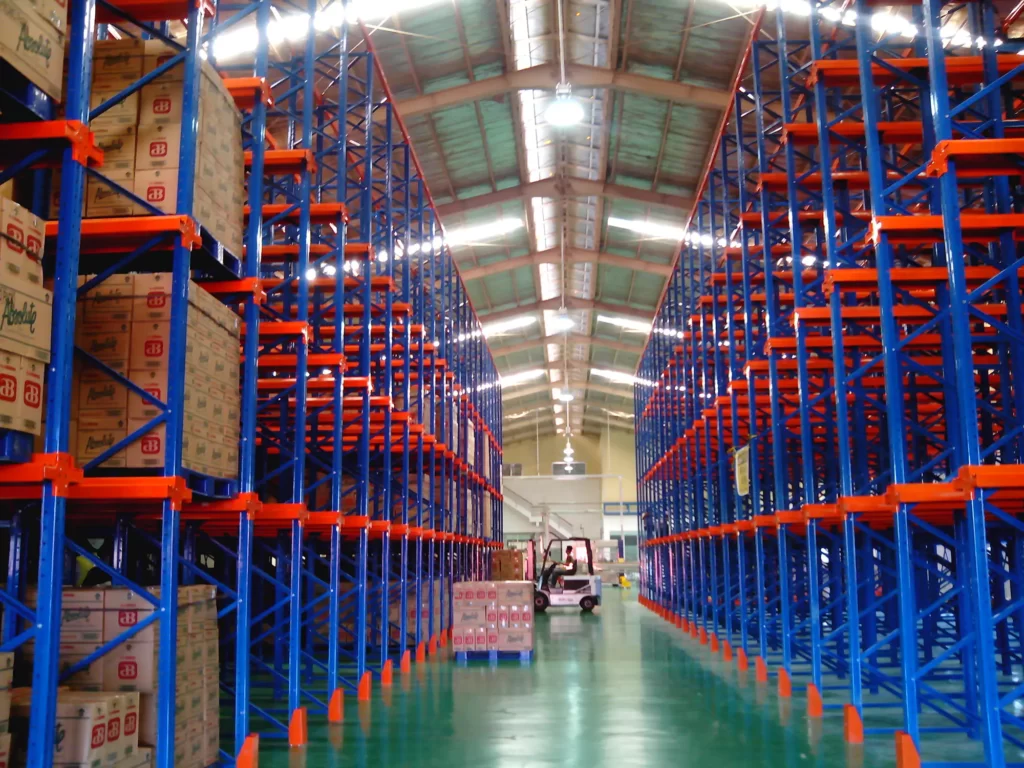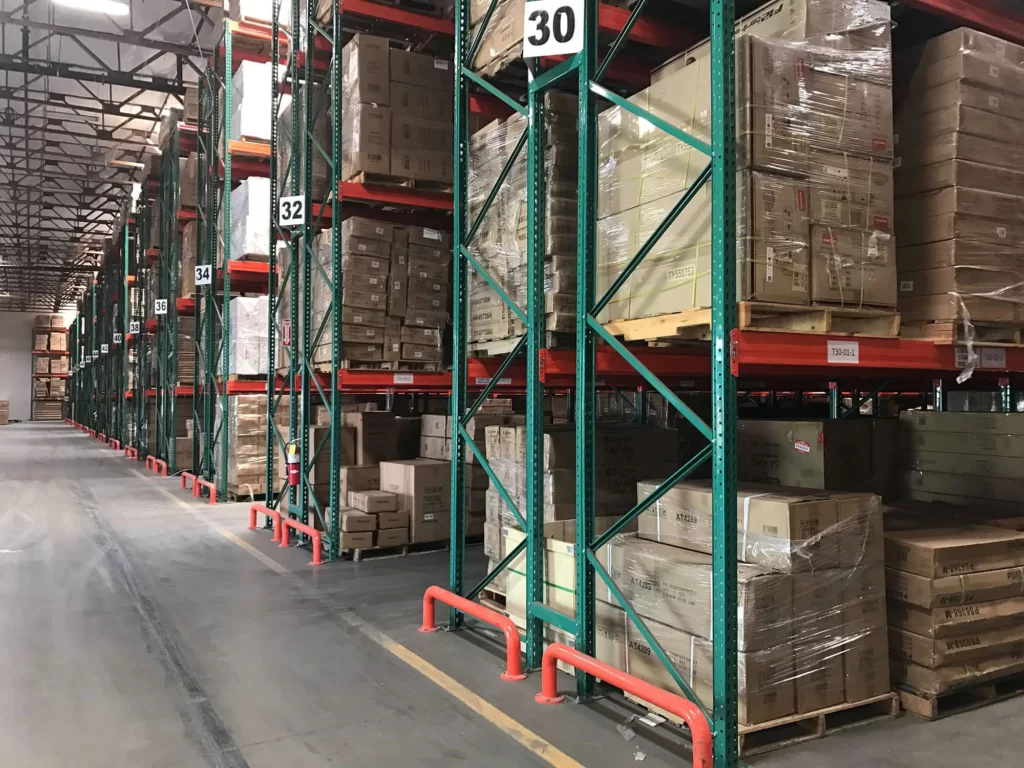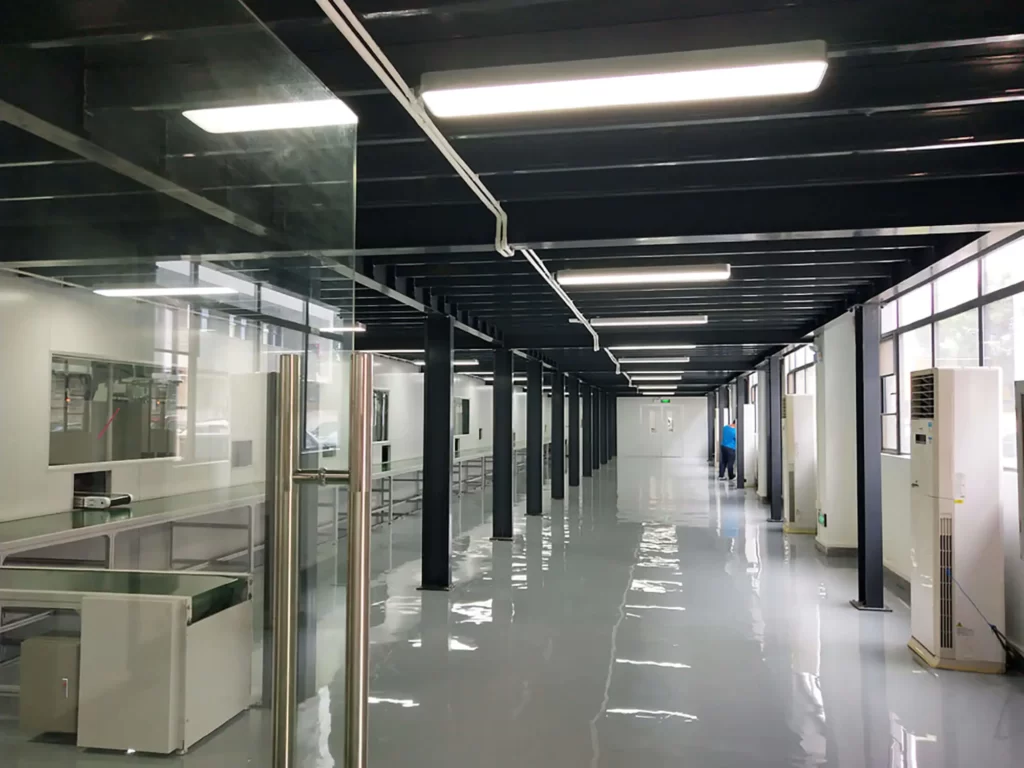Having a place to store food that would not spoil quickly, like a freezer warehouse, has become increasingly crucial in the food sector. As transportation and storage methods have improved, freezer warehouses have become an attractive option for firms wishing to grow. In this article, we will delve into the fascinating world of freezer warehouses, exploring their construction, operation, and the advantages they offer to companies in the food industry.
What Is a Freezer Warehouse?
Freezer warehouses are cold storage facilities that maintain temperatures below 0 degrees Fahrenheit (-18 degrees Celsius). The food sector relies heavily on these types of storage facilities to ensure the long-term safety of perishable items, including meat, fish, fruits, and vegetables. High-quality insulation is used in the construction of freezer warehouses to keep the temperature stable, and the flooring is usually insulated to prevent condensation, which poses a risk to workers and can harm stored goods.
Freezer warehouses often have a system of cooling appliances to regulate the temperature within. Together, they create a consistent setting that is great for keeping frozen goods frozen for a long time. The number of cubic feet that needs to be cooled, the temperature differential between the warehouse and outside, and the length of time that the goods will be stored all play a role in determining which cooling equipment to purchase and where to put it within the warehouse.
Freezer storage facilities have not only refrigeration equipment but also unique shelving and rack configurations for storing perishable items. Frozen pallet storage racks, shelves, and other storage solutions are all part of these systems. The storage capacity required and how successfully the system facilitates goods management will determine the system selected.
Explainer: Freezer Warehouse vs. Frozen Storage Warehouse vs. Cold Storage Warehouse.
Cold storage warehouses, freezer warehouses, and frozen storage warehouses are all used to store and transport perishable items. Yet, they serve different purposes and are built and outfitted differently.
They Have Different Purposes
Cold storage facilities are built to protect goods from spoilage for long periods of time. They’re used to keep perishables like frozen food, medicines, and chemicals safe for long periods of time by maintaining extremely low temperatures. Frozen storage warehouses, on the other hand, are used to store goods at a temperature that ensures their short-term viability. In most cases, perishable goods like fresh vegetables and dairy items will require one of these containers.
The primary function of frozen storage facilities is the long-term storage of frozen goods. Cold storage facilities are like freezer warehouses in that they maintain a constant temperature, but they are designed to store much bigger quantities of frozen goods. The needs of the company and the goods being stored will determine which of these three options is best.
They Have Different Construction Methods
When it comes to construction, both freezer and cold storage warehouses require sandwich panel insulation to prevent the transfer of temperature to the outside. However, the flooring of freezer warehouses must be insulated to prevent condensation, while cold storage facilities do not require this. Both types of warehouses require the same cooling equipment components, such as compressors, evaporators, condensers, and expansion valves. The selection and placement of these components depend on the cubic feet to be cooled, the temperature difference, and the duration of storage.
Their Management is Different From Each Other
Similarly, effective management of a cold storage or freezer warehouse requires specialized skills and knowledge of the industry. The management of frozen food warehouses, in particular, demands years of dedicated learning and knowledge of emerging business trends. Warehouse managers must have a plan in place to prevent problems and regularly communicate with others in the market to get fresh ideas about new cold storage equipment.
Capacity of Storage
Finally, in terms of storage facilities, freezer and cold storage warehouses typically have similar storage systems. The choice of storage system depends on the storage capacity they provide and how well they facilitate goods management. Frozen storage warehouses, on the other hand, may require specialized storage systems such as blast freezing or cryogenic freezing to meet the specific needs of the products being stored.
Brief History of Freezer Warehouses.
The origins of the modern freezer storage industry can be traced back to the early 20th century. An American named Clarence Birdseye in the 1920s transformed the food sector with his quick-freezing method. Freezing food at very low temperatures was used in this method, which kept the food fresh and maintained its nutritional content. The present market for freezer storage was made possible by Birdseye‘s innovation.
As the demand for frozen foods has grown over the years, so has the freezer storage business. Freezer warehouses provide a secure and convenient environment for storing food and other perishables, making them an essential link in the modern food supply chain. Because of the cutting-edge machinery and technology installed in these warehouses, the products held within are kept at constant temperatures and humidity levels, guaranteeing their freshness and safety for human consumption.
Growth in the freezer storage industry is forecast to be substantial over the next few years, thus, the current state of the business is very encouraging. According to a survey by Allied Market Research, rising urbanization, shifting consumer lifestyles, and rising demand for convenience food items will propel the worldwide frozen food market to $404.8 billion by 2027.
In addition to the food industry, the freezer storage market is also expanding in other sectors such as pharmaceuticals and biotechnology. With the increasing demand for temperature-sensitive products, the need for reliable and efficient freezer storage facilities is more important than ever.
Designing a Freezer Warehouse.
Automated Systems
In a freezer warehouse, where working conditions can be harsh due to the low temperatures, automated facilities offer a safe and controlled environment for storing and handling goods. These facilities use automated storage and retrieval systems (AS/RS) to maximize the use of available surface area and increase storage capacity.
Common forms of AS/RS seen in cold storage facilities include single-deep and double-deep pallet racking. Double-deep racks maximize storage space, whereas single-deep racks make it easier to get to the pallets. Automated pallet shuttle systems allow for even greater storage capacity thanks to their deep channels and motorized shuttle for storing and retrieving pallets.
Automated methods provide numerous benefits as well. They expedite the receiving and shipping of goods, lessen the likelihood of damage to products, save money on labor, and make the workplace safer for employees by removing hazardous conditions. Moreover, these systems can aid in energy conservation through efficient utilization of space and reduced need for cooling systems.
Manually-Operated Systems
Operators play a crucial role in the smooth operation of manually operated freezer warehouses. Forklifts are used to transport items and deposit them in the warehouse’s storage facilities. Pallet racking is only one of many conventional storage options that would be at home in such buildings. Drive-in pallet racking, Radio shuttle pallet racking, and push-back pallet racking are three of the most popular pallet racking systems. These setups are very useful in cold storage facilities since they maximize the efficiency of the available area.
Mobile pallet-racking is another well-liked option; being a high-density system, it cuts down on the amount of money needed to keep the building at a comfortable temperature. If you need to store a lot of pallets but yet keep them all at a constant temperature, this solution is for you. Manual methods are still commonly employed in the freezer storage industry because they have various advantages over automated alternatives.
Designing a Freezer Warehouse.
Freezer warehouse design is an important process that must take into account several elements. The objective is to make sure the place can run smoothly and productively. The logistics of how tasks are divided up inside the warehouse is an important consideration. To keep things running smoothly, it’s crucial that the available space be used effectively. There needs to be enough room for all the processes to run well, including commodities receiving, shipping, storing, and picking.
To get the most out of the warehouse, it’s important to plan which tasks will be performed there. For instance, if you want to prepare orders, you’ll need a dedicated room for that. The layout, storage systems, and temperature needs of the facility are other important considerations when developing a freezer warehouse. Careful planning and design can optimize a freezer warehouse for maximum efficiency and productivity.
Entry and Exit Points
Entry and exit points are essential to consider when designing freezer warehouses. These points must be located to facilitate the logistics flow and avoid congestion. These areas also need to be spacious enough for forklifts and pallet jacks to enter and leave without hitting anything.
They need to have automatic doors built that keep the cold air within the warehouse, and an air curtain is commonly used to keep the warm air outside. Dock levelers are frequently used to make it easier to load and unload cargo, by bringing the loading dock up to the same level as the truck. Maintaining the cold chain and lowering energy costs by limiting the amount of time doors are open is made easier with well-planned entry and exit locations.
Storage Area
When designing the storage area of a freezer warehouse, it is important to consider the available space and ensure that the racks used can maximize throughput per location. Proper ventilation is also necessary to maintain the temperature required for freezing. However, order processing can become challenging in freezing temperatures, which is why solutions such as pick stations outside the freezing area or voice-picking systems can be implemented.
The use of pick stations at a cold temperature ensures that the cold chain is not broken, while voice-picking systems free up operators’ hands to handle goods. It is also important to keep in mind the mobility limitations of operators in freezer warehouses due to the heavy jackets and personal protective equipment (PPE) they wear.
Types of Freezer Warehouses.
Freezer warehouses can be classified into different types based on ownership, operation, and storage facilities. Private freezer warehouses are owned and operated by companies for their own use, whereas public freezer warehouses are owned by third-party logistics providers and are available for lease by multiple companies. Public freezer warehouses offer a cost-effective solution for small to medium-sized companies that need to store frozen products.
Another type is the hybrid freezer warehouse, which combines the features of both private and public freezer warehouses. These warehouses are owned by a consortium of companies that use the facility for their own products while also leasing out the space to other companies.
Is Freezer Warehouse a Good Business?
Investing in a freezer warehouse can be a good business decision for those looking to capitalize on the increasing demand for cold storage facilities. As the food industry continues to grow, so does the need for storing frozen and chilled products, making freezer warehouses a vital part of the supply chain. Additionally, freezer warehouses can serve multiple industries beyond food, such as pharmaceuticals, biotechnology, and cosmetics, further expanding the potential customer base.
Moreover, a freezer warehouse can be a profitable venture due to its ability to offer long-term rental agreements and generate a steady stream of income. This allows for a reliable revenue stream, making it an attractive investment option for those seeking stable returns.
Freezer Warehouse: Conclusion
Cold storage facilities, such as freezer warehouses, play a crucial role in the food sector by protecting perishable items from the elements. Improvements in technology and logistics have led to a marked improvement in the effectiveness of these specialist facilities throughout time. Cold storage, frozen storage, and freezer storage facilities all look very similar from the outside, but their functions and the machinery they use are very different. The market for freezer storage facilities is likely to expand at a rapid clip over the next few years, thanks to rising demand for frozen and temperature-sensitive goods. Automatic facilities provide a secure and regulated setting for the storage and distribution of frozen commodities.








